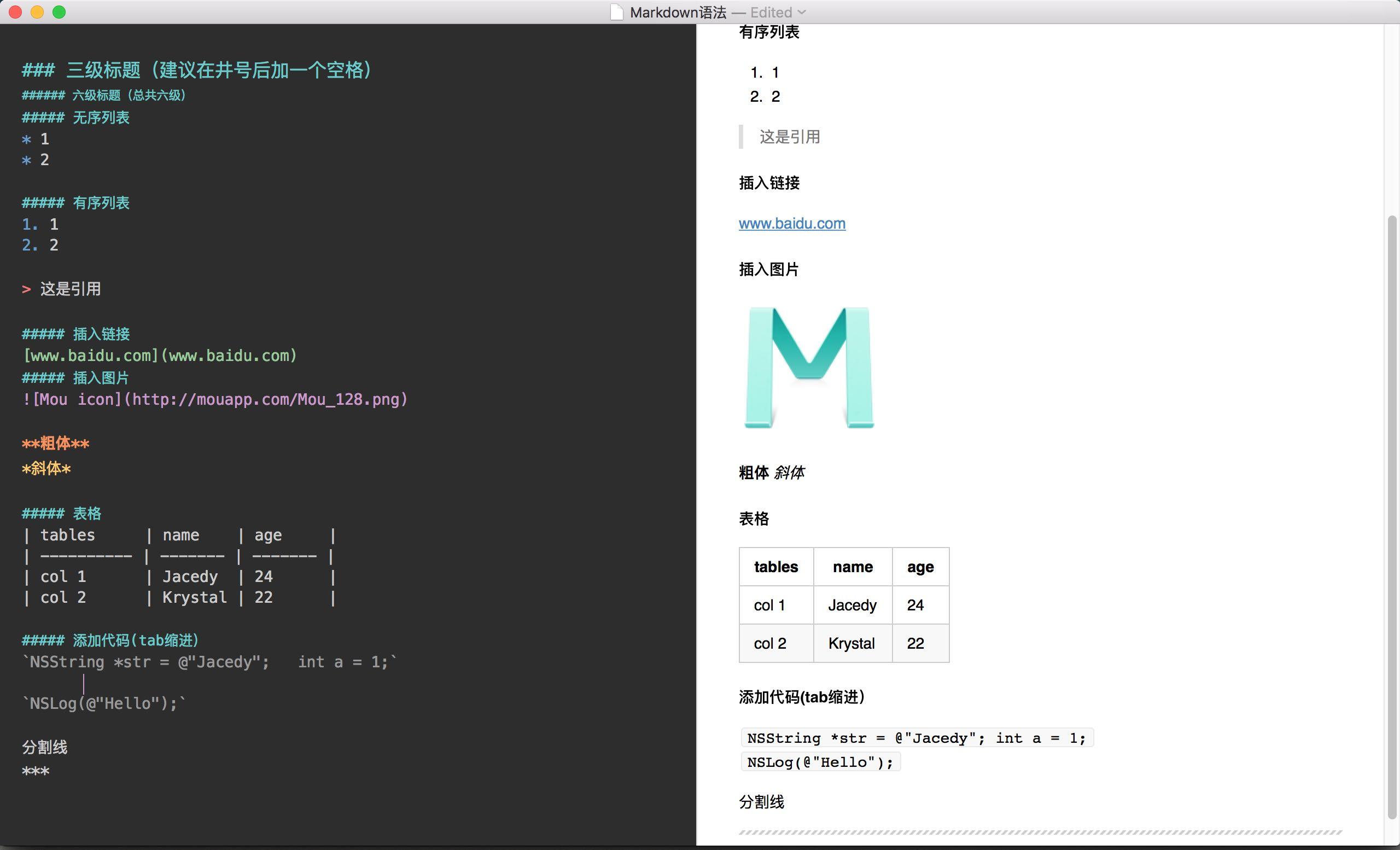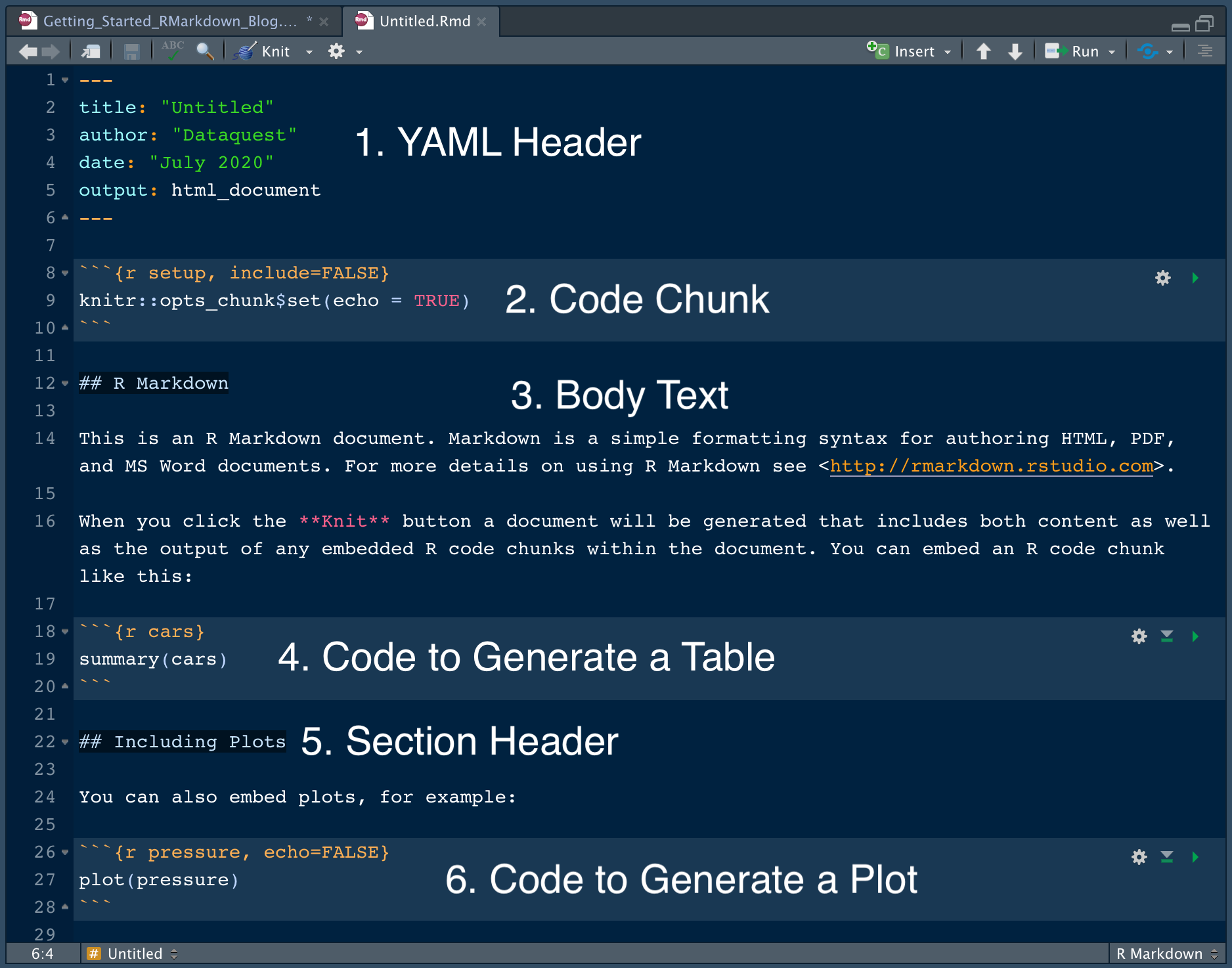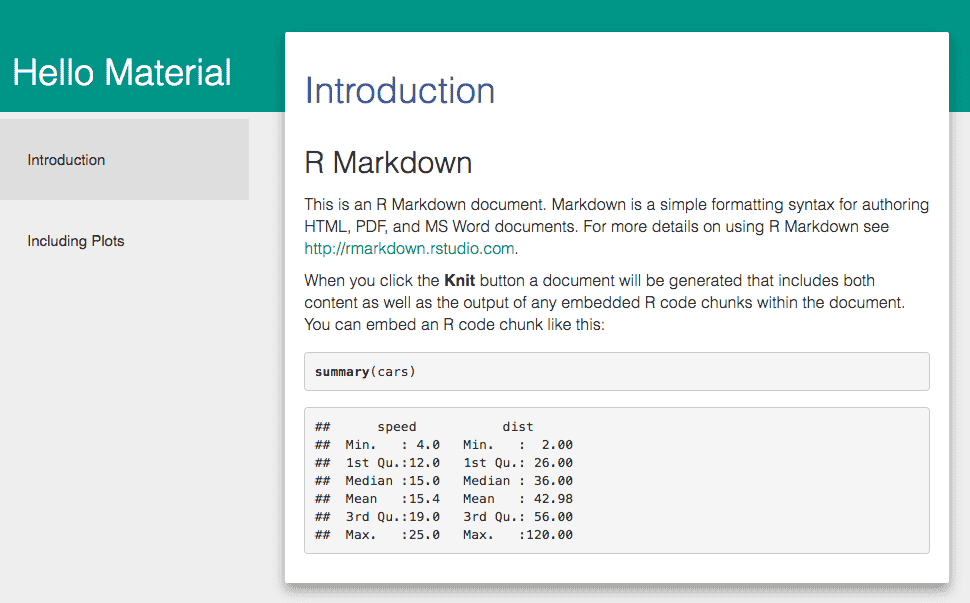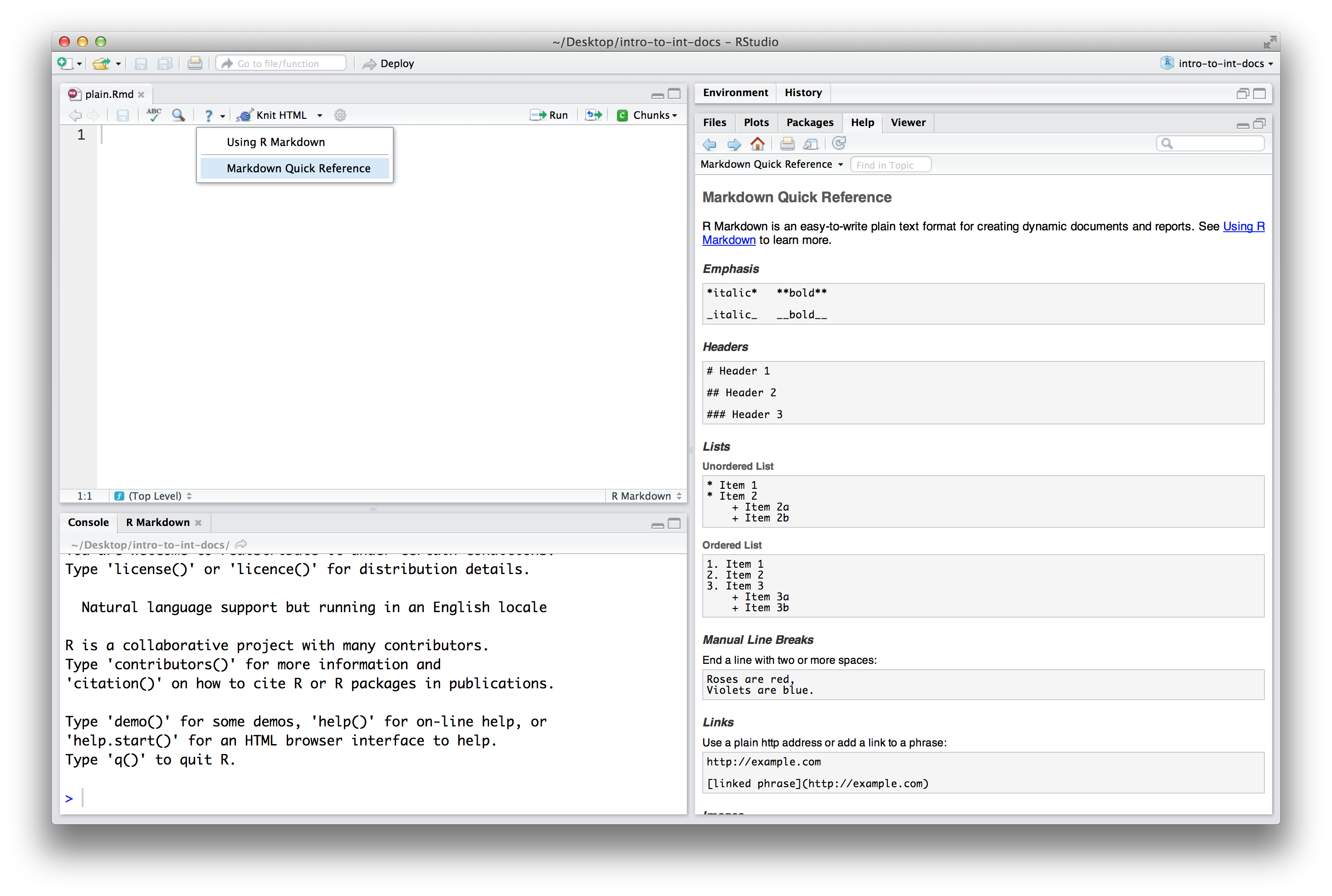Is there a way to create nice looking tables in r markdown without using a separate program? The first official book authored by the core R Markdown developers that provides a comprehensive and accurate reference to the R Markdown ecosystem. With R Markdown, you can easily create reproducible data analysis reports, presentations, dashboards, interactive applications, books, dissertations, websites, and journal articles, while enjoying the simplicity of Markdown and the great power of. R Markdown allows to generate a report (most of the time in PDF, HTML, Word or as a beamer presentation) that is automatically generated from a file written within RStudio. The generated documents can serve as a neat record of your analysis that can be shared and published in a. The simplest way to write a quick report, mixing in a bit of R, is to use R Markdown, a variant of Markdown developed by the folks at Rstudio. You should first read the page about Markdown. R Markdown is a variant of Markdown that has embedded R code chunks, to be used with knitr to make it easy to create reproducible web-based reports. The Markdown syntax has some. Rstudio and R users in general can benefit from Rmarkdown for producing reproducible reports. R Markdown is an easy-to-write plain text format for creating dynamic documents and reports.
Learning Objectives
After completing this tutorial, you will be able to:

- Add an image to an
R markdownreport. - Describe the ideal location to store an image associated with an
R markdownreport so thatknitrcan find it when it renders a file.

What You Need
You need R and RStudio to complete this tutorial. Also you should have an earth-analytics directory set up on your computer with a /data directory with it.
Add an Image to Your Report
You can add images to an R Markdown report using markdown syntax as follows:
However, when you knit the report, R will only be able to find your image if you have placed it in the right place - RELATIVE to your .Rmd file. This is where good file management becomes extremely important.
To make this simple, let’s set up a directory named images in your earth-analytics project / working directory. If your .Rmd file is located in the root of this directory and all images that you want to include in your report are located in the images directory within the earth-analytics directory, then the path that you would use for each image would look like:

images/week3/image-name-here.png

$ In R Markdown
Let’s try it with an actual image.
And here’s what that code does IF the image is in the right place:
If all of your images are in your images directory, then knitr will be able to easily find them. This also follows good file management practices because all of the images that you use in your report are contained within your project directory.
Matrix In R Markdown
Additional Resources
In R Markdown
